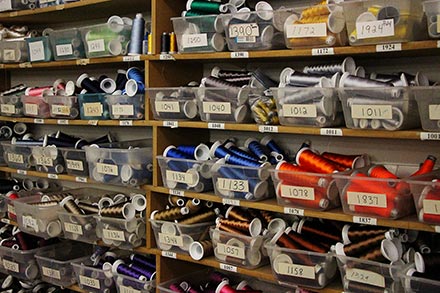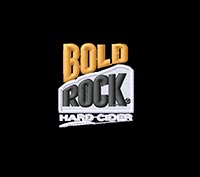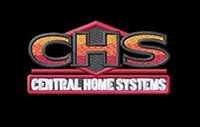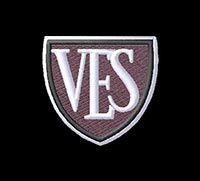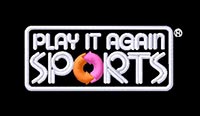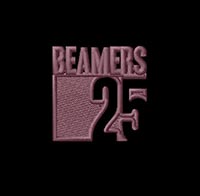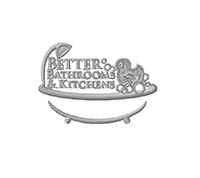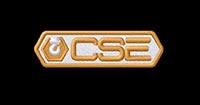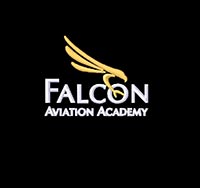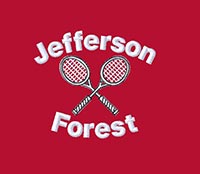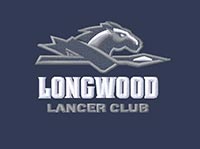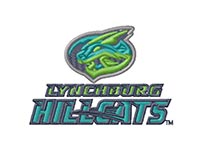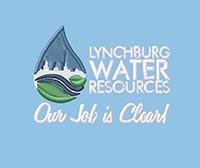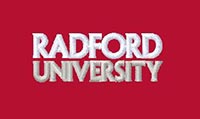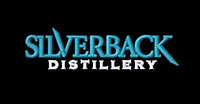Intro to Embroidery
Embroidery is the process of creating text or a design with thread. Spectacular designs can be created with the combination of fill stitches, column stitches and walking stitches. Far from the slow and meticulous nature of counted cross-stitch, modern computerized embroidery machines can make up to 1000 stitches per minute. Embroidery can be done on any garment which can be hooped, it’s an ideal compliment for products like polo shirts, button-up dress shirts, jackets, bags and hats.
High Peak Sportswear began doing embroidery three decades ago on a single head machine with limited capabilities. We now have top of the line, state of the art Tajima embroidery machines. Multi head machines produce up to 12 garments each run enabling us to do large orders quickly and at competitive prices. Our experience in design and embroidering garments combined with our attention to detail ensures your job will be done right and look great.
Our Design Studio allows customers to design artwork, but it is primarily suited for Screen Printing artwork. Read More
As described in our FAQ’s and elsewhere in this website, artwork for embroidery is very different from artwork for Screen Printing. Because of the nature of embroidery and the limitations of modern embroidery machines, artwork for embroidery is highly specialized and in some ways limits the complexity of the design.
We welcome you to use the design shop to upload your logo, add text and send it to us for review. Or if you choose, to put together elements of clip art which you would ideally like to have included in your embroidered design. However, our goal is to have a final product both of us are proud of. For this to happen, our art and embroidery staff will use their experience and expertise to advise and tailor your artwork. It serves no one’s interest for us to digitize artwork which we are confident will not look good, and in many cases won’t even sew without tearing holes in garments.
We look forward to putting our 30 years of embroidery experience to work for you and providing a stellar final product of which we are all proud of.
The Modern Embroidery Process
Step 1 - Artwork Stage
Our dedicated and talented artists will create artwork for your custom embroidery needs. Artwork for embroidery is specialized and varies greatly depending on whether you’re needing hats, shirts, or your custom logo on the various other items available. There are physical limitations of what even the best computerized embroidery machine can do, our artists understand these parameters. Of course, you’ll get a chance to approve artwork long before it’s embroidered onto any garment. More info can be found from our FAQ’s at the bottom of this page.
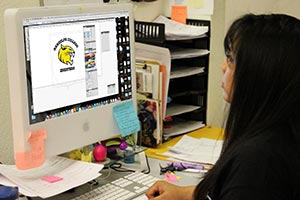
Step 2 - Digitizing Your Logo
After artwork is completed and approved, the artwork then has to be digitized. This digitized file is highly specialized and tells the embroidery machines how to sew the logo, what type of stitch to make, where to make it, and what color thread to use. The quality of this digitized file is extremely important and even the best embroidery machine can’t produce a high quality logo if the digitizing isn’t done properly. High Peak Sportswear has in house digitizing experts who will assure that the job is done properly, and that the final product will be great looking embroidered hats and shirts.

Step 3 - Production
The first step after digitizing is to determine which of our embroidery machines is the best and most cost effective to produce the job. We have embroidery machines ranging from 1, 4, 8, and 12 heads. An 8 head machine will embroider 8 garments each run, a 12 head 12 garments each run etc. Depending on how many garments are in the order, if the embroidery is going on hats or shirts, how many stitches in the logo, and how much thread changing needs to be done, the appropriate sized machine will be chosen to complete the job.
Regardless of what type of garment is being embroidered, it has to be held in a hoop. We have hoops of all shapes and sizes which accommodate hats, jackets, left chest locations, sleeves etc. During the hooping process a piece of material called pellon is hooped along with the garment to be embroidered. This pellon will end up on the inside of the garment when embroidery is completed, it’s function is to provide a stable area for the embroidery and also to give the stitches additional material on which to hold.
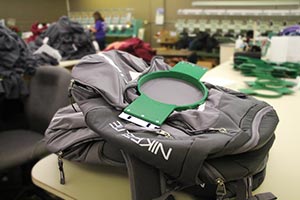


Step 4 - Finishing
After the embroidery is completed the stitching is inspected, the pellon backing material is trimmed, and excess thread is trimmed. The trimming process is one aspect of the job that easily shows the attention to detail of the embroidery company which did the work. After the embroidery machine finishes one component of the design it moves to another area of the hat or shirt and continues sewing. This will drag a thread across the shirt or hat , and this thread will need to be trimmed either manually or by the embroidery machine itself. The embroidered garment is then steamed, folded, boxed and ready for pickup or delivery.
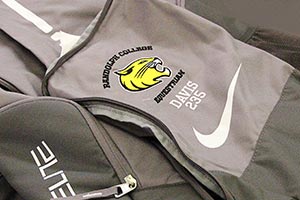
Tackle Twill Embroidery
Tackle Twill uses an embroidery machine to sew down a piece of twill fabric, in a way similar to applique. It is an upscale product arguably producing the best looking and most durable embellishment to a uniform or other garment.
The process begins with the art department producing the design knowing what parameters exist for doing Tackle Twill. A computer program then generates a digitized file which includes 3 components. First is a walking stitch which goes around the entire outside of the twill. The second is a zig zag or column stitch which goes around the outside of the twill with half the stitch falling on the twill. The third component is a file which a plotter/cutter will use to cut the twill which will be applied.
The garment is hooped and placed in an embroidery machine, the embroidery machine then does the walking stitch which produces the outline of where the twill should be placed. After the twill is placed down the embroidery machine then does the zig zag stitch securing the twill to the garment.


Frequently Asked Embroidery Questions
General
Art
Garments

